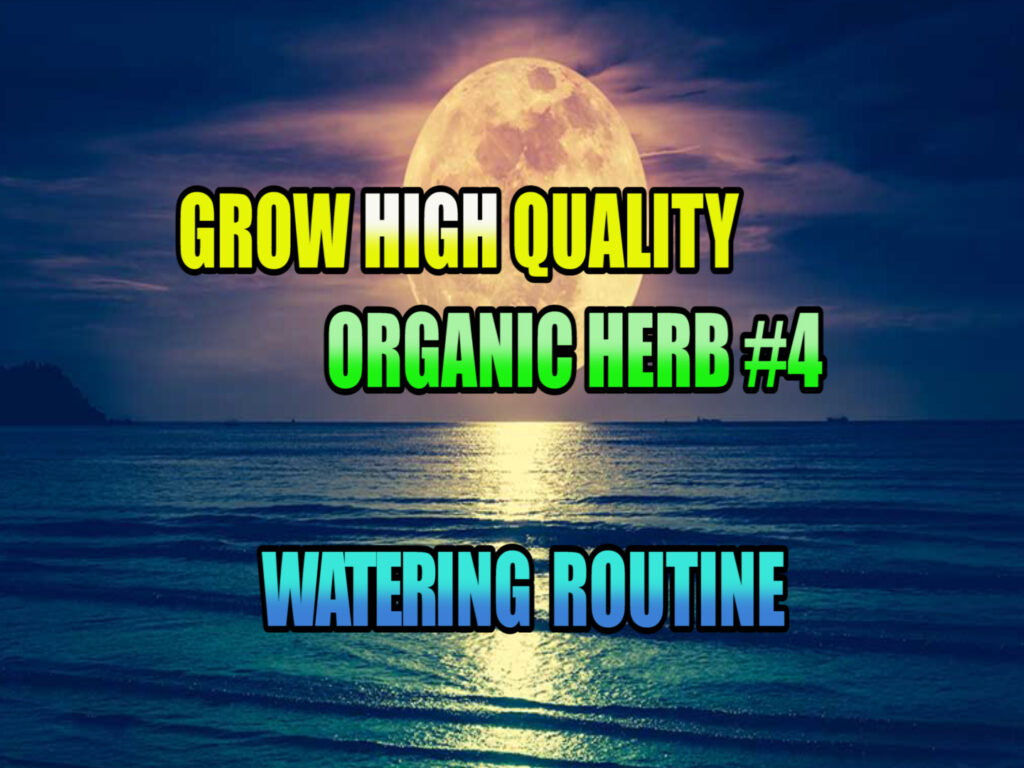
Watering an indoor marijuana plant is not a simple task and depends on several factors. Here are some key points to consider:
Frequency: Once the plants grow out of the seedling stage, they should be watered every two to three days1. The frequency may increase as the plants grow larger1.
pH Level: The water must be kept within the ideal pH range of 6.0 to 6.8 so your plants can best absorb the different minerals they need for growth2.
Parts Per Million (PPM): This is a measurement of nutrient minerals present in the water. Plants in the vegetative phase do well with a ppm of 500, but 1000ppm is ideal during the flowering stage2.
Amount of Water: A safe rule of thumb is to anticipate a maximum water demand of 1 liter per square foot of flowering plant canopy or ten liters of water per square meter3.
Remember, these are general guidelines and the exact watering needs can vary based on factors like the size of the plant, the stage of growth, and the growing conditions. It’s always a good idea to observe the plants themselves, as opposed to following a strict regimen4.
How Often To Water Cannabis
How often should you water cannabis plants?
Cannabis is a plant that loves water. For those new to indoor or outdoor marijuana cultivation, understanding how frequently you should water cannabis plants – or when to stop giving cannabis nutrients – can be quite tricky. There are many elements at play from the plant strain, to conditions, pot size, and the growing substrate.
Like any living thing, it’s important to find the ‘Goldilocks Zone’ for watering cannabis – not too much, not too little. By the end of this article, you will know how often your plants need watering and if there is a best time to water indoor weed plants. You will also learn some tips for keeping your cannabis plants healthy and hydrated.
How often do I water my weed plant?
A general rule of thumb is that plants should be watered when the soil is 60-70% dry, or if the first two to three inches of soil in the container feel dry. A container that feels exceptionally light may also be a sign your plant needs some water.
Nevertheless, it’s important to note that there’s no universally agreed-upon method for cannabis watering nor an ideal time for feeding cannabis plants. Each grower has a different way of doing things according to their situation and practical needs.
Several factors can contribute to how much water is ideal for your cannabis plants, including genetics, phase of growth, growing setup, and whether you feed with every watering. However, pot size, medium, and environmental conditions are the most important factors to consider.
The following are general guidelines and can give you a rough sense of when to water your weed plants; however, if a plant requires water and falls outside of these ranges, feel free to water it as needed.
Plant stage Watering Frequency
Germination Keep wet without soaking
Seedling Up to twice a day – keep damp
Vegetative Every 2 to 4 days
Flowering Every 2 to 3 days
How much water do I give my weed plant?
Overwatering marijuana plants is a common mistake made by beginners. For a plant’s roots to extend and penetrate deeper into the soil, they must have a cycle of wet and dry. Moreover, roots draw oxygen from the soil as it dries, so if the soil is too moist, the plant cannot draw in oxygen efficiently – effectively drowning.
Overwatered plants have drooping leaves similar to those in drought conditions, except the leaves are dark green and their tips are curled.
It is a good idea to keep a log of how often you water your plants. You can set up a cannabis plant water schedule – once they grow out of the seedling stage, you should water them every two to three days.
You will have to hydrate your plants more frequently as they grow because they will need more water as they become larger.
Outdoors, as the weather gets hotter, you’ll need to water the plants more often, and as it cools, you’ll need to water less.
The best time to water indoor weed plants
The best time to water indoor weed plants is early morning or when the grow lights turn on. By doing so, nutrients are better absorbed, and mold is less likely to develop.
Your plant will flourish if it has just the right amount of wet and dry.
Here’s how often to water during flowering
Cannabis plants consume a similar amount of water during the first stages of flowering and their vegetative stages. Increase water during flowering as the plant grows larger. The water temperature should feel cool when touched (68°F is acceptable).
The roots will absorb considerable amounts of water once the buds begin developing larger pistils and the calyxes expand. Generally, plants require more water as they grow bigger buds.
Growers often water their plants during the flowering phase according to the following schedule:
Day 1: The plants are watered with nutrients
Day 2: No watering
Day 3: The plants are watered with pure water
Day 4: No watering
Repeat the process. Switching between fertilized water and regular water is also a good idea. The pot should be soaked until you notice some water flowing from the drainage holes on its base. Then, the water must drain quickly into the growing medium after spending a brief time on the surface. Water retention rates will differ between growing media, so there is no universal schedule. Additionally, pH should be maintained between 6-7 for soil and 5.5-6.5 for hydro.
What is flushing?
When marijuana is grown, flushing plays an important part in the process. Flushing involves stopping giving the plant nutrients and instead giving it water. This way, it is possible to get rid of nutrients that have built up in plants over time.
Flushing occurs a week or two before harvest, once a plant has entered its final blooming stage at the end of the flowering stage, and its buds are almost ready to harvest.
Flushing is also helpful if your plants have nutrient imbalances, such as nutrient lockout, a condition in which they are overloaded with nutrients and unable to absorb any more.
For best results, you should let the last flush occur for one to two weeks before harvesting your weed. Then, keep your plants hydrated as usual, but with only water. As a result, the plant will be forced to use up its reserves of nutrients – if these aren’t used, the buds may not be of the highest quality.
How do I know when to stop giving cannabis nutrients?
When the THC-rich trichomes on marijuana plants turn milky, it’s a signal to stop giving cannabis nutrients. It’s now time for flushing. You can tell this is happening by simply viewing the appearance of the trichomes.
How many gallons of water per weed plant are needed for optimal growth?
Researchers estimate that a cannabis plant uses approximately 22.7 liters, or 6 gallons, of water per day throughout the growing season, which lasts roughly 150 days between June and October.
Final thoughts on watering weed plants
So, what’s the verdict? How often should cannabis plants be watered, and when is their optimal feeding time? Unfortunately, the answer is that there is no one-size-fits-all answer; it depends on various factors. That said, there are some general guidelines in this article that you can follow when you’re watering cannabis plants, and we hope this article has armed you with enough information to make an informed decision about how to care for your plants.
jointlybetter.com
homegrowncannabisco.com
Here are some common mistakes when watering marijuana plants:
Overwatering: This is the most common mistake, especially for new growers1. Overwatering can be caused by watering too much at a time, watering too often, using a growing medium that holds a lot of water but little air, or using a growing medium without good drainage at the bottom2. Overwatered plants will wilt and their leaves will turn yellow and droop3.
Underwatering: Giving your plants too little water can also negatively affect their growth1.
Incorrect Watering Technique: Water seedlings in a small circle around the base and avoid giving more water than they can use4. Wait until the top inch of the soil is dry before watering again4.
Ignoring Plant Signs: Some growers look for signs of dehydration—light wilting, weak branches, pale leaves—and water accordingly1. Over time, you’ll develop a refined sense of when your plants require water based on the variables of climate, cultivar, and acute weather events1.
Remember, a simple rule is to water less, but water well1. Rather than giving your plants a little bit of water often, treat them to a healthy, less frequent soak1. It’s always a good idea to observe the plants themselves, as opposed to following a strict regimen1.
royalqueenseeds.com
apotforpot.com
howtogrowmarijuana.com
seedsbros.com
greenmanspage.com
What are some signs of overwatering?
How do I fix an overwatered plant?
Can you recommend a good watering schedule for cannabis plants?
